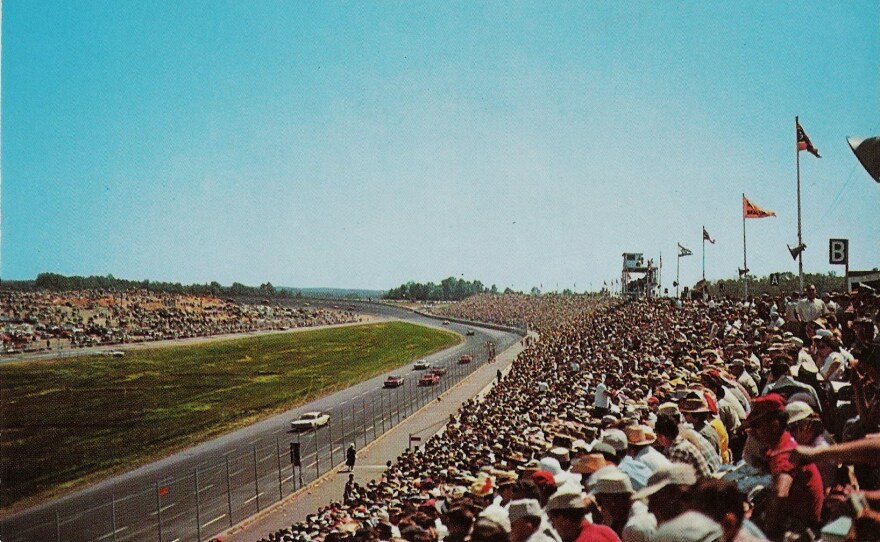Just steps from the North Carolina Zoo, there’s a wooded pathway lined with remnants of one of the state’s most notorious industries: moonshine. It’s called Purgatory Trail.
“So at night, it used to be said that you could see the fires and smoke from various 'cooking operations,' shall we call them, you could see them from town,” says Bob Langston, the zoo’s sustainability and outreach coordinator. “And so between the fire and the smoke, you don't want to go down there — that's purgatory, that's halfway between heaven and hell.”
Those cooking operations? Also known as moonshine distilleries. Langston, who helped carve out this nearly 5-mile trail, says haze and fog often shroud the mountain, particularly in the summertime. That made it a popular place for bootleggers to set up shop.
“There's water up here, there's a creek that runs through the area,” says Langston. “You had all the stuff you needed if you were going to run a still, plus you were far enough away from town.”
When zoo officials first surveyed the area in the 1970s, Langston says they found evidence of at least a dozen stills. The trail leads to what they think are the last remnants of distillation equipment remaining on the mountain. It’s among the latest sites to be added to the Moonshine and Motorsports Trail, a state-funded initiative that launched last year.
Michelle Walker is with the North Carolina Department of Natural and Cultural Resources. She says the trail was created in part to recognize the role moonshine played in the history of the state’s rural areas in particular.
“During Prohibition, rural North Carolina especially was very economically depressed. Moonshine was pretty easy to make. And it was a pretty big moneymaker as long as you didn't get caught,” she says. “So a lot of rural families turned to moonshine, and there were lots of places up in the North Carolina mountains, or in the swamps of eastern North Carolina.”
That drive to avoid getting caught led to the birth of stock car racing, she says.
“The guys who were running the moonshine started souping up their cars and learning how to drive on twisty-turny back roads and mountain roads and evading the law, essentially,” she says. “And eventually, they just started racing each other on local dirt tracks. And they discovered people would pay money to come watch them race.”
Dirt tracks were built in moonshine hotspot North Wilkesboro in 1946, two years before NASCAR’s first season. Others, including Charlotte Motor Speedway and Rockingham Speedway, followed in the 1960s. All three are on the Moonshine and Motorsports trail.
Walker says stock car racing continues to be a major part of the state’s cultural and economic landscape. Federal COVID-19 relief dollars recently supported the revitalization of North Wilkesboro Speedway. It hosted the NASCAR All-Star Race in 2023, 27 years after the track initially closed.
“That was millions of dollars injected into our economy from that,” she says. “It's a big part of us. It's a part of our history, it's part of our culture. It's really important to rural North Carolina.”
North Wilkesboro and Charlotte Motor Speedway were among the original eight stops on the Moonshine and Motorsports Trail when it debuted last year. Nine more stops were added this year, including the zoo and Bowman Gray Stadium in Winston-Salem. And, Walker says more are in the works.
You can find more information about the trail, including all stop locations, on NCDNR’s website.




